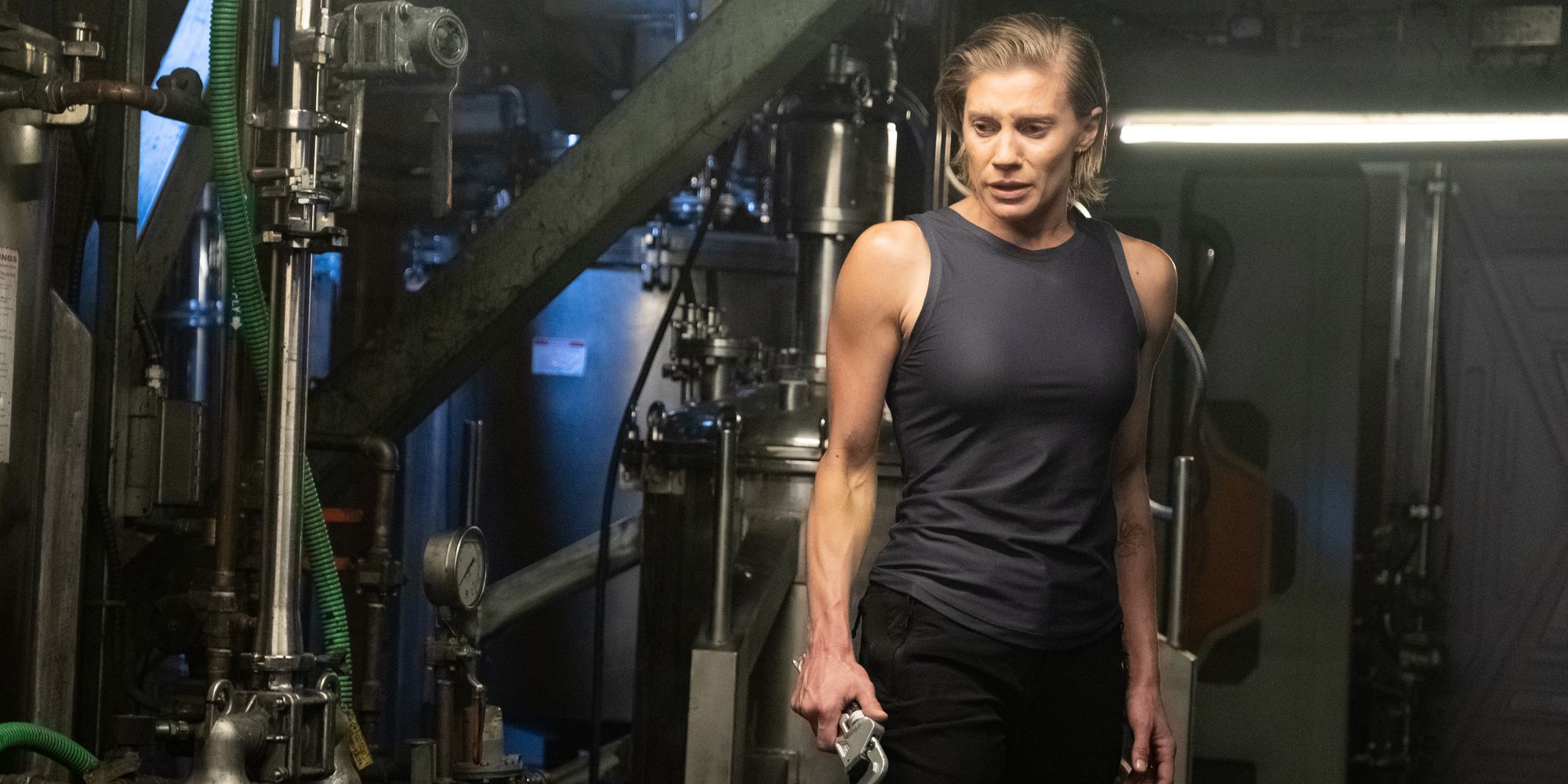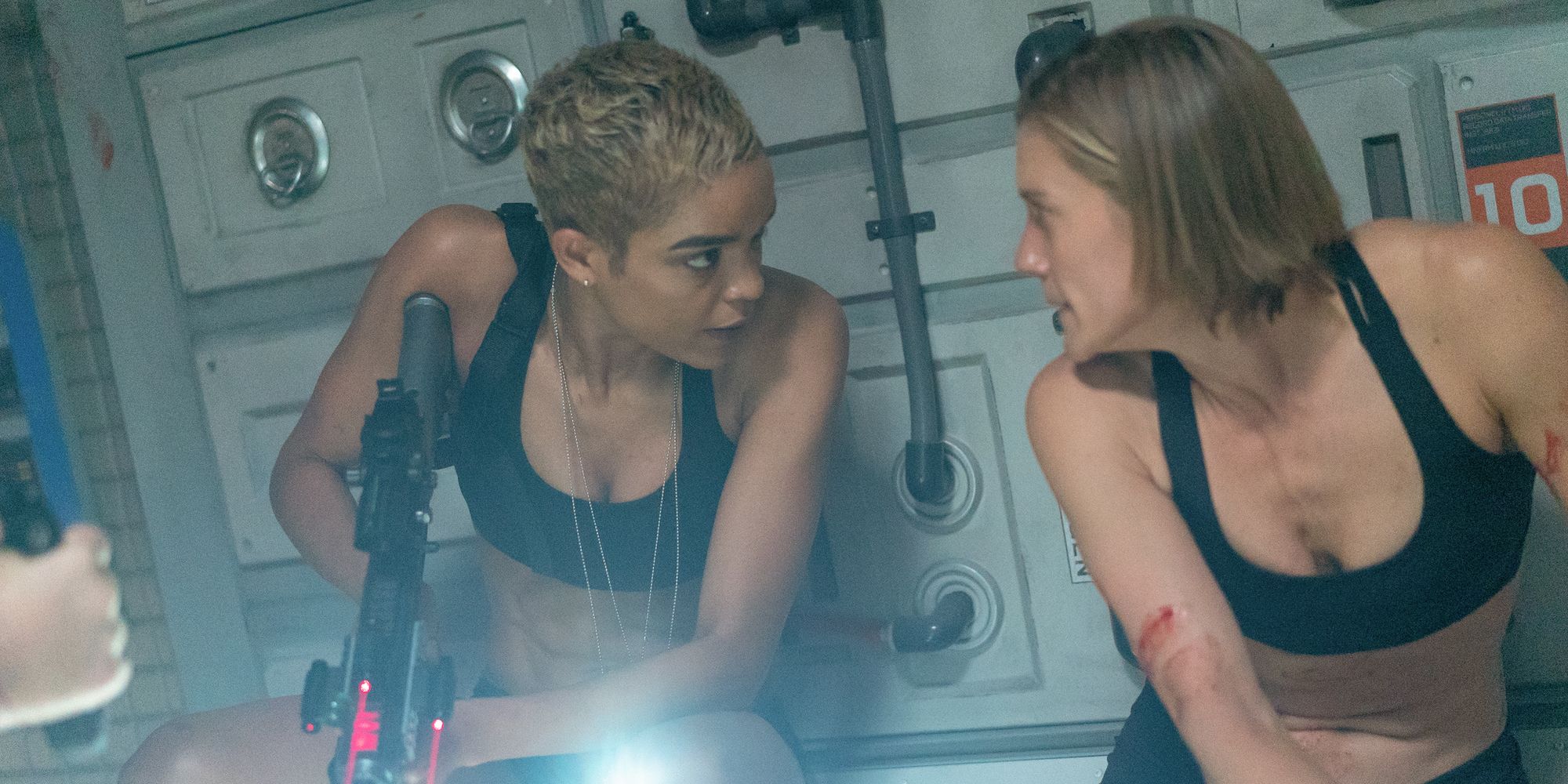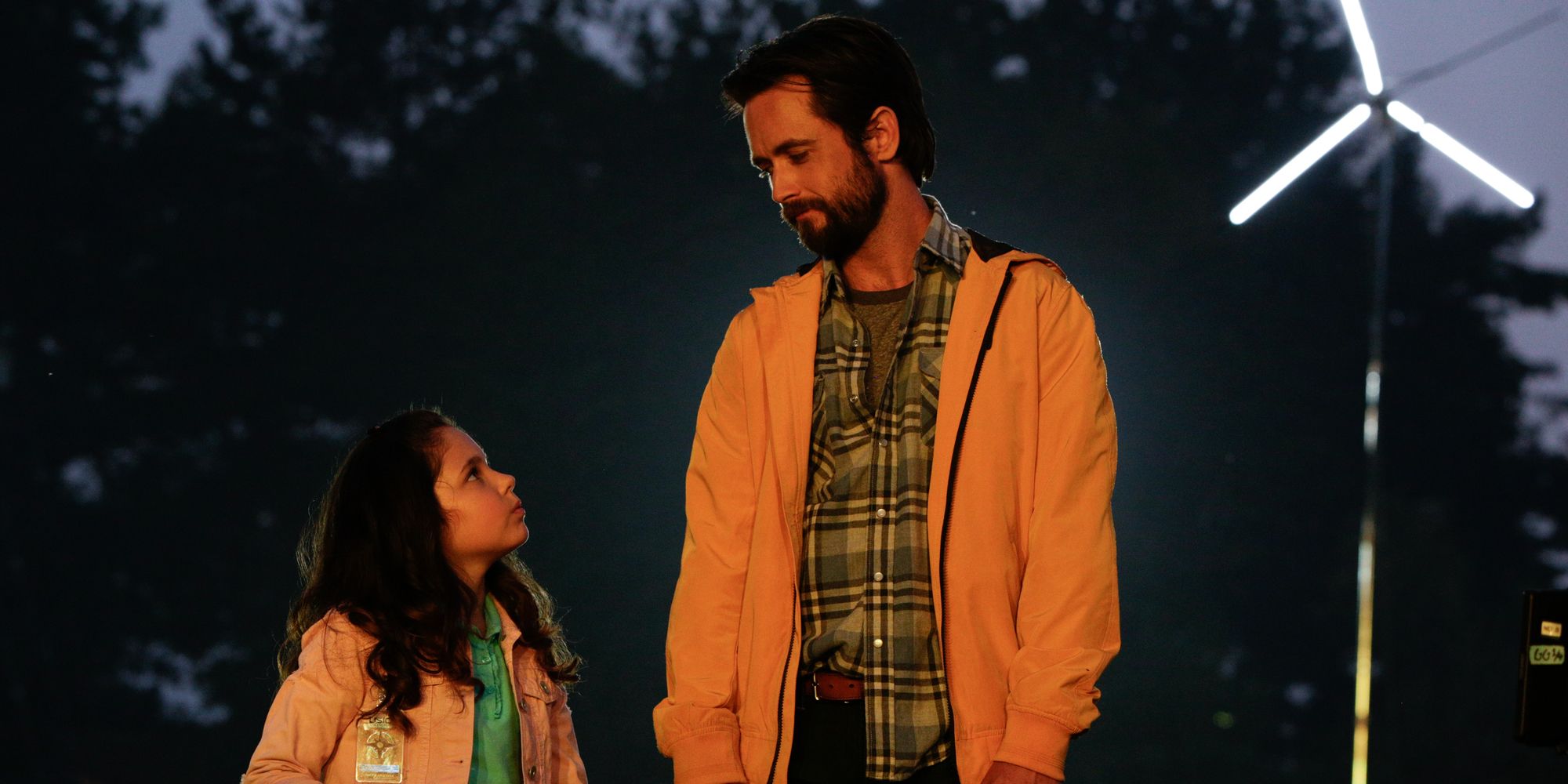Netflix’s new sci-fi thriller Another Life has a great hook: It brings Katee Sackhoff back to outer space on a television series for the first time since her run as Starbuck ended on Battlestar Galactica. Unfortunately, the appeal of seeing Sackhoff once again fill the shoes of a steely space pilot aboard a troubled ship in the deepest reaches of space is undercut by clumsy filmmaking, derivative storytelling, and a shaky premise that goes nowhere fast. The result is a cut-rate sci-fi series that blatantly lifts from the likes of far more memorable genre films, particularly Alien and Arrival, in lieu of formulating its own meaningful set pieces, let alone its own story.
Another Life begins with the arrival of an extraterrestrial craft landing on Earth. The craft promptly forms a bizarre crystalline structure, basically daring humankind to try and communicate with it. This would normally be depicted as an earth-shaking event, something that completely alters humankind’s understanding of their place in the universe. Yet, Another Life depicts the event with all the fan-fare of a traveling carnival setting up in the parking lot of an abandoned Kmart. The series, from creator Aaron Martin (Slasher), is clearly aware the resemblance to Arrival, and as such makes the questionable decision to subvert such comparisons through the use of some early-‘90s, SeaQuest DSV-level special effects, which render the Möbius-strip spaceship less a fascinating plot starter than a sobering reminder that VFX cost money.
Budgetary constraints noticeably break Another Life’s necessary suspension of disbelief at nearly every turn. The series’ primary storyline is broken up into two narratives, one involving Sackhoff’s Niko Breckenridge as she takes a team of questionably skilled astronauts into deep space to seek the presumed point of origin of the bizarre spacecraft. Simultaneously, Niko’s husband, Erik Wallace (Justin Chatwin), is one of the scientists put in charge of cracking the puzzle of the alien structure, and possibly engaging in some sort of communication with extraterrestrial life.
The series struggles with a persistent kind of vagueness that extends beyond the iffy scope of its conceit. This is particularly true of Chatwin’s end of the story, which involves Erik caring for his and Niko’s young daughter, while also contending with Harper Glass, an Alex Jones-type news blogger played by Selma Blair, who, for reasons that remain fuzzy, wants to turn Niko’s mission into a story worthy of the scandal rags. The series’ indistinct storytelling extends to its depiction of the events themselves, as Erik heads up a team of roughly four scientists, overseen by a single woman who may or may not have any actual authority. The lack of any formal power structure or hierarchy, combined with the too relaxed nature of Erik and his team (they freely wander in and out of the landing sight, sometimes accompanied by his young daughter, before kicking off after work to go have some beers and play trivia at a local bar) dilute any sense of urgency regarding humankind’s first contact with intelligent life elsewhere in the universe.
That lack of formality and structure has a cascading effect across the series as a whole, which when combined with the muddled nature of Another Life’s larger storytelling and thriller ambitions, results in a frustratingly amateurish production. That ungainliness is particularly evident in the series’ main story thread, which again eschews any greater understanding of the power structures involved in the space mission itself to engage in a series of repetitive, hour-long problems needing to be solved in order to eat up the streaming real estate handed to the series by Netflix.
While that kind of storytelling was used in Netflix’s Lost in Space reboot, that series at least anchored its endless stream of complications to a single unifying idea, giving the story a greater sense of purpose. Another Life has no such sense of purpose. Instead, it drifts in and out of a vague objective to find the spacecraft’s point of origin, while distracting the audience with everything from a failed mutiny to an alien virus to a full-scale invasion by an unseen monstrous entity. To make matters worse, one of those bland scenarios is revealed to have been a dream, meaning the hour is more or less a complete wast of time.
Another Life’s often shoddy storytelling is exacerbated by its wooden dialogue spoken by thinly drawn characters. Case in point, Jessica Camacho’s Michelle Vargas eagerly participates in the initial mutiny against Niko’s leadership with almost zero motivation. After the mutiny is thwarted, she repeated physically assaults the ship’s captain with absolutely no repercussions for her actions, instead, the series keeps her around seemingly to engage in tiresome squabbles regarding Niko’s leadership abilities. With the exception of Tyler Hoechlin (Supergirl) the rest of the crew is mostly comprised of interchangeable characters, most of whom die (one of them in a direct ripoff of the chest-bursting scene from Alien) or inadvertently cause life-threatening problems that force the series’ main plot to stall out.
Though it should have been a welcome return for Sackhoff to the genre that resulted in her most recognizable role, Another Earth is a third-rate science fiction thriller that wastes its lead actor as well as its premise. It’s one thing for a series to pay homage to the stories that influenced it, but it’s another thing altogether for the series in question to not bring any original ideas of its own to the table.
Another Life streams exclusively on Netflix beginning Thursday, July 25.



